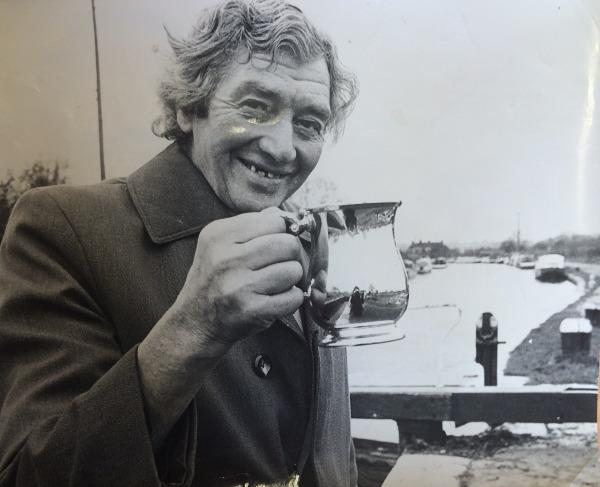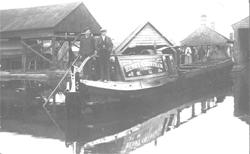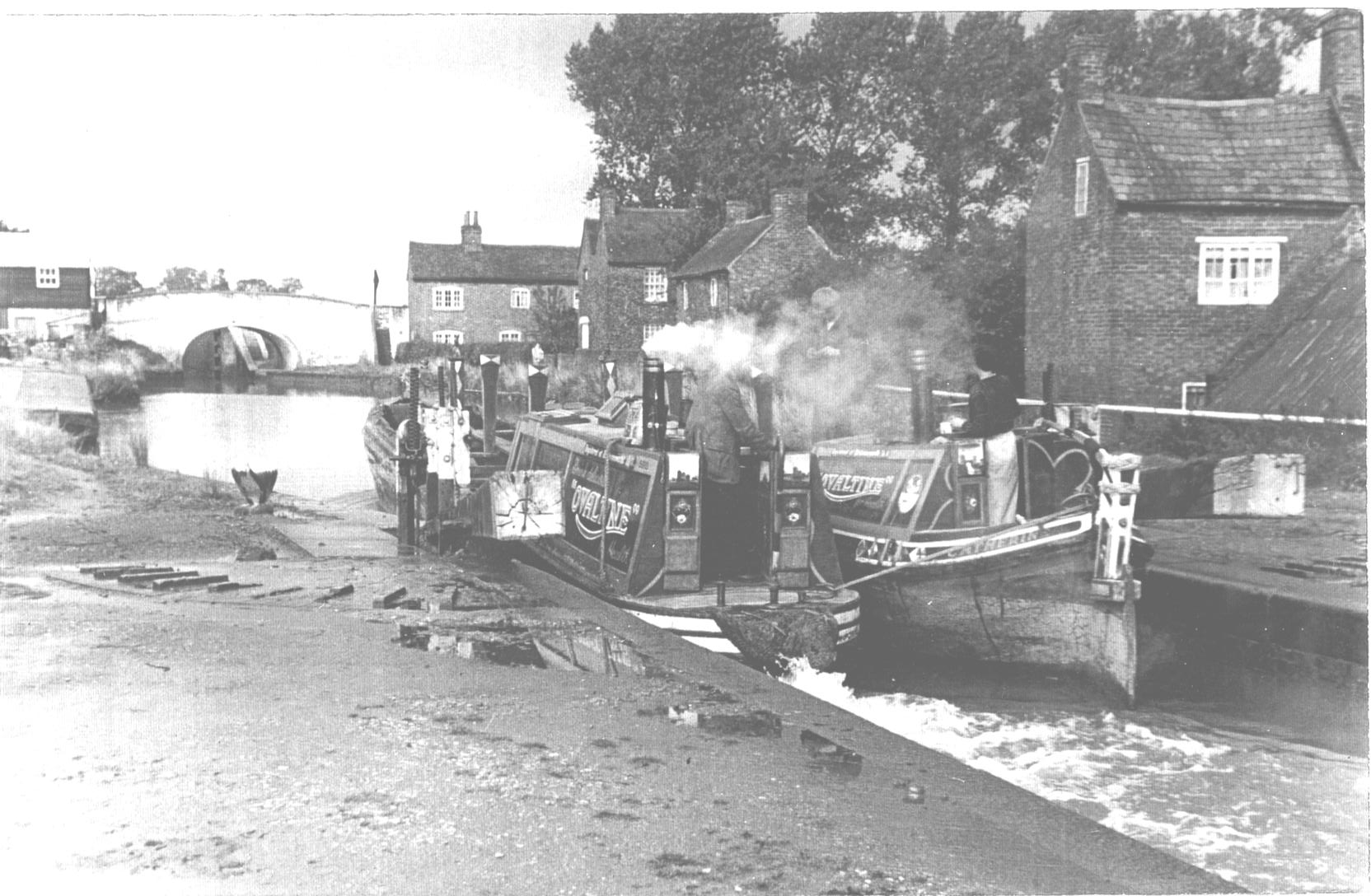The story of Henry’s Tow Path Bench at Whilton Locks
Henry
Grantham was the last lock keeper at the Whilton and Buckby Flight of locks,
near Whilton Marina on the Grand Union Canal. Henry often won the ‘best kept
locks ’ award and was a well known character locally and on the canal network.
His family had
worked on working canal boats, carrying cargo around the midlands and Henry
grew up working alongside his parents on their boats.

When Henry's father also called Henry (1st) and his wife
retired in 1941 they sold their working boats to Samuel Barlow Coal Co of
Braunston, This meant that Henry had to seek work with his erstwhile rivals The Grand Union Co,
and when the canal network was nationalised in 1948, Henry worked for the newly
formed British Waterways Transport, finally becoming lock keeper on the Whilton
and Buckby flight for many years until he retired in 1941.

On Henry
Grantham’s death in 1989 locals decided there must be a memorial to him and his
proud traditions. A towpath bench was decided upon. It was discovered that the
Wooden Canal Craft Trust were restoring the very boat upon
which Henry had lived and worked on as a young man called “Forget Me Not” and they had some redundant timber that was
too far gone to be re-used in the rebuild, but sound enough for a garden bench.
Hence some of the old English Elm wood from the Grantham family working boats,
on which Henry has lived and worked on during his life, was used to build the
bench. The bench was positioned overlooking the bottom Lock near the entrance
to Whilton Marina.
In 2005 the
ancient Elm eventually decayed and the bench was refurbished using English
White Oak.
In the
summer of 2016 the bench was again in
sorry state, so Whilton Marina, with the help of their carpenter Pete, once again restored the bench to its former glory.
The Story of The Grantham Family Working Boats; Forget Me Not and Sarah
Jane
In the early
1900’s the Grand Union Canal would have
been very busy with working narrowboats,
carrying coal, cargo and manufactured goods from London and the midlands, by
horse drawn canal boats. Some companies had very
large fleets of boats , but others were family owned and run by Independent Boatman,
these were known as “Number Ones” Henry
Grantham (1st) was one such “Number One” and in 1927 ordered a new
boat from Lees and Atkins on the Coventry Canal. As motorised boats were very few and far
between during these days, Henry’s new boat was horse drawn and he named it “Forget
Me Not” The Grantham family worked hard and in 1929 were able to have an engine
installed by Nursers Yard at Braunston.
With her
increased versatility she did well, and in 1931 returned to Nursers to be
modified with a proper motor boat stern.
In 1933 the
Granthams took delivery of a new butty from Lees & Atkins, which they
named“Sarah Jane” which was probably the name of their very first boat. The two
boats did well during the thirties, with regular contracts to carry coal to
Dickinson’s paper mills in North London. However by the late thirties work
tailed off. The powerful Grand Union
Canal Carrying Co had built up a vast, well organised fleet, which meant they
were undercutting the “Number Ones” who often returned from London with empty
boats. Slowly the “Number Ones” gave up the struggle and sold out to the larger
companies.
Henry
Grantham (1st) held out until 1941, when he and his wife finally
retired and they sold the boats to Samuel Barlow Coal Co. Barlows already had a
boat named “Forget Me Not” so the butty’s name was split between the pair of boats
with the motor becoming “Sarah” and the butty “Jane” Both boats were engaged in
the coal trade throughout the war.

Working boats pass by at Whilton Locks
In the mid 40’s “Sarah” appeared in the film
“Painted Boats” an evocative story of a horse and boatman that was forced to
submit to his boat being motorised.
By the late
50’s due to motorway completion, trade on the canals was in serious trouble and
“Sarah” was thirty years old which was the normal life for a working boat in
those days. In 1960 she was retired from carrying and was converted for
residential use. Her new owner taking her to the Kennet and Avon Canal, and
living aboard for many years.

Forget Me Not
Around 1971 her owner died and no one seems to
know what became of “Forget Me Not” or her butty “Sarah Jane”
Eventually she turned up at David Jones Boatyard
at Chester in 1976 for disposal. A hire fleet owner had done some repairs on
her, but she was in a sorry state. The owner was unable to restore them, so
gave the boat to a group of people who wanted to save at least a few old wooden
canal craft. She lay for some ten years virtually derelict, until her
protectors had finished re-building another wooden boat and were able to set up
the “Wooden Canal Craft Trust” with their main aim being her restoration.